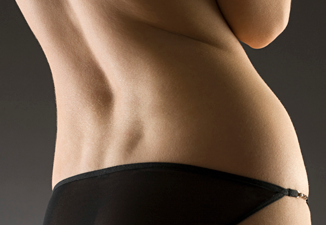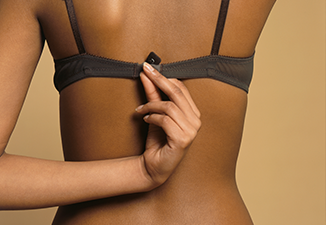
Fat Melters and Fat Reducers

What you should know
What Are Fat Melters and Fat Reducers?
Noninvasive fat melting treatments are best for localized areas of fat (and are not intended for weight loss) and smaller areas because the tips of the machines cater to those parts of the body; surgical procedures can treat the entire body. But, because these technologies are still rather new, there are some questions about the predictability of the results, if any, how long they will last and if maintenance sessions will be needed.
How nonsurgical fat melters work: Regardless of the mechanism used (cold, heat, ultrasound or injections), all nonsurgical devices cause the fat cell to either break open or melt, due to heat, cold, laser energy or fat-toxic chemicals, and be excreted via the body’s natural metabolic systems. Even if the death of the cell is immediate, the visible changes to your body usually can’t be seen for a few months since the entire process, from start to finish, can take at least three to four months, if not longer, depending on your body type and metabolism.
Heat vs. Cold Fat Melters
With tissue heating, there is the theory that collagen may tighten and fat may be melted by the effect of tissue heating. Unfortunately, these effects involve temperatures far greater than the body can tolerate and there is the risk of skin burns and damage to deeper tissue layers. With cold, which stems from the theory that cold temperatures can reduce inflammation in fat, in turn causing cell death, the fat cells are cooled through external manipulation, and the lipids of select cells crystallize and melt without damaging the surrounding tissues. The death doesn’t happen immediately but rather occurs over weeks, which is why results are not instant.
Laser Fat Melters
Laser-assisted lipo (or laser liposuction) uses high-powered lasers to deliver energy to heat tissues and theoretically causes skin retraction. Some doctors prefer laser liposuction; others feel there is room for error, especially in terms of burning the skin and underlying tissues.
While the main goal of most skin-tightening devices is to firm up slack skin, these machines actually work double-duty to eliminate fat. Used off label, nonablative radio-frequency energy sends short yet intense pulses through the skin to target the dermis to potentially create new collagen and tighten existing collagen, simultaneously breaking up fat. As the energy is deposited into the fat cell, fatty acids are released, and the cell eventually dies. However, there is the risk of skin burns and damage to deeper tissue layers. The heat from these procedures that stimulates collagen production and skin tightening may destroy the fat cells in that area if the energy is great enough.
Ultrasound Fat Melters
The idea for an ultrasound fat-ridding device came about after doctors noticed how ultrasound used during liposuction affected fat, breaking it into small clusters that could more readily be removed. The separated fat mixes with water from tumescent fluid and turns into an emulsion, which translates into more fat removal because of the consistency, and more even results. With an external machine, the hand piece is run over a particular area, and the ultrasound waves purportedly have a disruptive effect on the fat cells, allowing the body to naturally rid itself of the fat. Because of the targeted ultrasound that’s used, some experts feel that machines like UltraShape and LipoSonix work best for treating abdominal fat and saddlebags. Ultrasound liposuction (UAL) destroys the fat cell before removing it. This type of liposuction uses ultrasound frequencies built into the tip of the cannula to explode fat cells so that it’s easier for the fat to come out.
Fat Freezing
Fat freezing procedures such as Coolsculpting works by using a controlled method of cooling to remove fat noninvasively by causing cell death. During the downtime-free treatment, a suction cup-like device is adhered to areas like the stomach or waistline to target unwanted fat by sending cold to the cells. While it is said that just one treatment is needed (although you may require more), you’re likely to see results in two to six months—results are not instant because it takes that long for the death cycle of a fat cell to occur and for the body to remove the residue. Keep in mind that fat freezing may cause you to lose inches, but not weight.
Who Should Not Consider Fat Melters
Those who do not have small pockets of stubborn fat to remove.
Who Should Consider Fat Melters
Those who are at an ideal weight with small resistant areas of fat.
Post-Treatment Care: Fat Melters
Post-treatment care may vary depending on what you have done but fat melting procedures are typically downtime-free with minimal amounts of recovery. As always it is important to maintain a healthy weight following any fat melting procedure for optimal results.
What to Expect With Fat Melters
Fat melting techniques actually work double duty to eliminate fat. Used off label, nonablative radiofrequency energy sends short yet intense pulses through the skin to target the dermis to potentially create new collagen and tighten existing collagen, simultaneously breaking up fat. As the energy is deposited into the fat cell, fatty acids are released, and the cell eventually dies. However, there is the risk of skin burns and damage to deeper tissue layers.
Inside Tips: Fat Melters
Because fat-melting devices are still in their infancy, most experts agree that, that time and long-term studies are necessary to determine true efficacy.
Dissolve fat with lettuce and radishes: Abundant in iron and magnesium, which are believed to dissolve fat.
Dilute fat with citrus fruits: Oranges, lemons, limes and grapefruits are all rich in vitamin C and flavones, which help break down fatty compounds.






